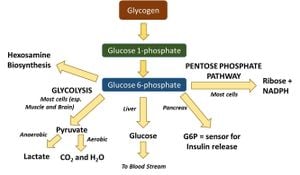Efficient Disaster Victim Identification (DVI) has never been more important than in the wake of mass fatality events. A recent study has unveiled innovative methods to improve this process through the combined use of the Applied Biosystems RapidHIT ID system and the DJI Matrice 300 drone, delivering promising results for onsite DNA analysis.
The ability to quickly and accurately identify victims plays a pivotal role in assisting families during difficult times, often providing much-needed closure. Traditional DVI procedures frequently encounter significant delays due to challenges like the degradation of samples and logistical difficulties at disaster sites.
To address these issues, this study, conducted at Pulau Sebang, Melaka, Malaysia, involved 40 buccal swab samples collected from simulated disaster victims and their relatives. The samples were processed using both the RapidHIT ID system, which can generate interpretable DNA profiles within 90 minutes, and conventional DNA methods. The research sought to compare the effectiveness of these methods alongside drone-assisted transportation of samples.
According to the findings, the RHID system achieved remarkable results, generating DNA profiles from all 40 samples, with 90% reflecting complete profiles. This success rate highlights the system's capability even when samples were analyzed after being stored for extended periods, up to six months.
The introduction of drone technology, particularly the DJI Matrice 300, served to expedite sample transportation, showcasing less time for analysis compared to conventional methods. "The drone-assisted procedure exhibits less time to obtain and analyse the samples but can still produce DNA profiles concordant with the conventional method," stated the authors of the article.
Forensic experts emphasized the transformative potential of integrating drones with rapid DNA systems, particularly during time-sensitive operations. Delayed identification due to logistical hurdles can impact the quality of DNA samples collected, underlining the necessity of efficient DVI methods.
The study's methodology involved trained first responders collecting DNA samples onsite, which were then quickly transported via drone to designated analysis centers. This approach not only improved operational efficiency but also mitigated exposure to environmental factors known to degrade DNA quality.
With emergency situations often leading to chaotic scenarios, having the ability to perform onsite analysis eliminates many of the pitfalls associated with traditional methods. Rapid DNA processing systems are capable of yielding results swiftly, which is indispensable for urgent cases where human remains may undergo rapid decomposition.
Research indicated strong concordance between the profiles generated by the RapidHIT ID system and those produced through conventional methods. The study recorded over 88% kinship matching between victims and their relatives, underscoring the reliability of this combined approach.
Despite the significant advancements shown, challenges remain, including ensuring standardized training for first responders involved in DNA collection. Proper techniques and immediate processing are pivotal to maintain high-quality results.
The authors concluded, "Rapid identification is important for bringing closure to victims' families and friends," signaling the need for continuous innovation and adaptation of technologies to improve DVI procedures across the globe.
This study paves the way for future research and implementation of rapid DNA technology and drone integration, potentially reshaping the approach to victim identification during disasters and significantly benefitting affected families.



